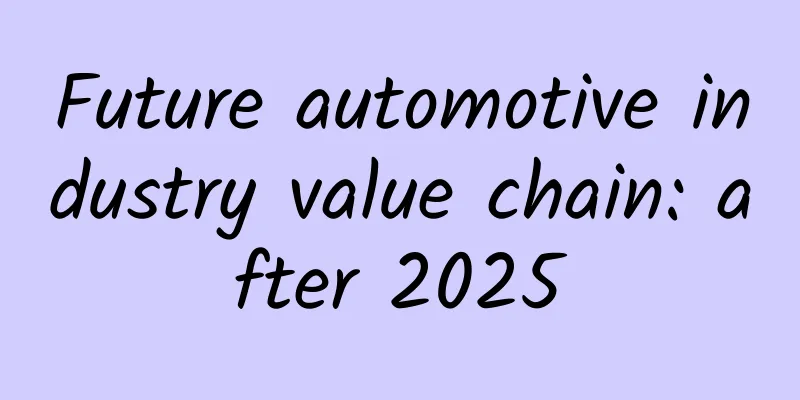Future automotive industry value chain: after 2025

|
In recent years, the topic of disruptive changes in the automotive ecosystem has dominated the relevant industry discussions, and a fundamental restructuring of the entire automotive value chain seems inevitable. However, many developments are still speculative and the future path is still unknown. Deloitte has launched the report "Future Automotive Industry Value Chain - 2025 and Beyond", which explores the most important driving factors for the development of the future value chain in today's uncertain times, and how automotive industry leaders should make investment decisions so that they can have corresponding professional technology, production capacity and stable supply chain when market demand emerges. Through scenario-based business modeling, this report identifies four reasonable settings that the value chain of vehicle companies may have in 2025, helping automotive industry decision makers to systematically verify their own forecasts and strategic plans. Key points/main results of Future Automotive Industry Value Chain - Beyond 2025:
Based on the survey results, this study made the following four predictions on the future development of vehicle manufacturers:
From various scenarios, automotive companies should actively invest in electric mobility, autonomous driving and Industry 4.0. OEMs need to evaluate various driving factors based on internal and external environments to be fully prepared to cope with future challenges and continue to occupy an important position in the market after 2025. The PDF version will be shared to the 199IT exchange group. If you want to support our development, please join us! |
<<: TSMC needs the mainland market to break Samsung's game
Recommend
The million-class Haobo SSR with a 0-100 km/h time of 1.9 seconds is launched, and it is targeting more than just Lamborghini and Porsche
This is the second time, after BYD looked up to i...
What are the functions of Foshan Insurance Mini Program? How much does it cost to develop a WeChat insurance mini program?
Not long ago, a colleague of mine bought another i...
Witness Dayu's flood control! The Feng River where the Book of Songs was born
Fenghe River, also known as "Fengshui" ...
Competitive analysis of 10,000-word long articles - Yuantiku, Honghe iXue, and Zuoyebox
Some people say that online education is the most...
The new Landwind Xiaoyao has a mature and youthful appearance design and is priced at RMB 79,900 to RMB 131,900.
On the evening of January 4, Landwind's new c...
Apple reminds developers again: full support for 64-bit is required by the middle of next year
On the morning of December 18, Apple reminded dev...
Download the complete set of video materials and pictures of "The Complete User Guide of Evernote"
Download the complete set of video materials and ...
Good news for crybabies, because tears actually contain happy hormones!
Audit expert: Liu Dongbao Chief Physician of Opht...
Uncovering the secret of HoloLens' high energy and low consumption: 24-core HPU
Even though it has been released for a long time, ...
Ali Xianyu’s event promotion and marketing rules!
To organize a good event, you cannot rely on sudd...
A journey inside a black hole: Does the singularity not exist?
Theoretical exploration of the interior of black ...
[Creative Cultivation Program] How dirty are your mobile phone, remote control, and bed sheets? They are like a garbage dump!
Author: Shao Menglong Reviewer: Ma Zansong, Deput...
Commonly used words by anchors in live e-commerce live broadcast rooms
According to the latest data this year, the numbe...
Is it true that drinking sugar-free beverages will not make you fat?
1. Eating sugar brings a lot of happiness In nutr...









